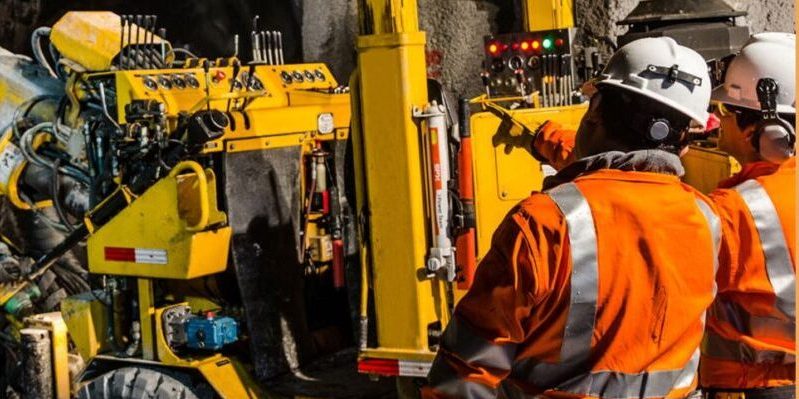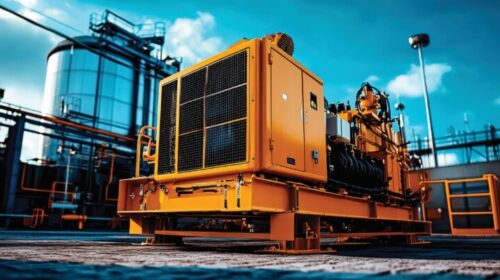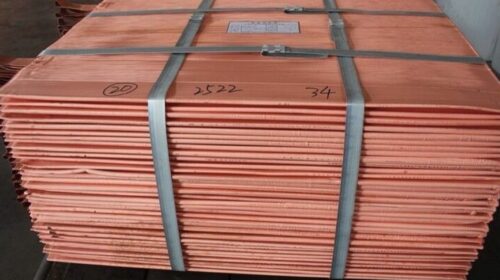BEMETALS INTERSECTS FURTHER ENCOURAGING COPPER RESULTS FROM THE PANGENI EXPLORATION PROJECT IN ZAMBIA
BeMetals Corp. (TSXV: BMET, OTCQB: BMTLF, Frankfurt: 1OI.F) is pleased to announce results from its 2021 core drilling program at the Pangeni Copper Exploration Project (“Pangeni Project” or the “Project”), located on the western extension of the Central African Copperbelt in Zambia. This program comprised six drill holes to test aircore copper anomalies at the D-Prospect and the Q and F targets. The Pangeni Project is located in an area where prospective extensions to the prolific Zambian Copperbelt (See Figure 1) are covered by a thin veneer of Kalahari sand units.
HIGHLIGHTS OF THE 2021 PANGENI COPPER PROJECT CORE DRILLING
- Q-Target: Drill Hole Q3-C1 intersected 4.14 metres grading 0.62% copper (“Cu”)
- Including: 1.30 metres grading 1.10% Cu
- D-Prospect: Drill Hole D7-C1 intersected 5.00 metres grading 0.58% Cu
- D-Prospect: Drill Hole D7-C2 intersected 3.37 metres grading 0.51% Cu
- And also: intersected 6.00 metres grading 0.39% Cu
Note: Intertek Genalysis completed the analytical work with the core samples processed at their preparation facility in Kitwe, Zambia. All analytical procedures were conducted in an Intertek Genalysis laboratory in Australia. Reported widths are drilled core lengths as true widths are unknown at this time. Based upon current data it is estimated true widths range between 80 to 90% of the drilled intersections.
John Wilton, President and CEO of BeMetals commented, “The 2021 drilling program at the Pangeni Copper Project has delivered a new and exciting dimension to our copper exploration with drill hole Q3-C1 returning a significant copper intersection hosted in siltstones at the Q-Target. These siltstone units are interpreted to be part of the Katanga Supergroup. Katanga lithologies near basement units are known to be the setting for many world class copper deposits in the Central African Copperbelt. This first Katanga sediment hosted copper intersection adds considerable prospectivity to the Project. We are now designing a follow-up exploration campaign for the Q-Target area to focus on its relatively close proximity to the SW-Prospect and a number of untested shallow aircore copper anomalies to the west and north of the Q3-C1 drill hole intersection.
Including today’s results from the D-Prospect, we are also encouraged that five of six core holes completed to date have returned significant copper mineralization. The grades of these intersections are similar to producing operations in the Domes Region, such as First Quantum Minerals’ Sentinel and Barrick Gold’s Lumwana copper mines in the Zambian Copperbelt. Further exploration to scope the scale potential of the D-Prospect mineralization is also being planned.”
PANGENI COPPER PROJECT
In 2021 the Company completed 1,382 metres of core drilling in six holes, 4,353 metres of shallow aircore, and a helicopter-borne electromagnetic (“EM”) survey over the Project. The interpretation of the EM survey data was integrated with previous geophysical and geological interpretations of the Property. The EM data improved exploration target selection and mapping of the Kalahari sand cover units. Four priority targets were identified from the aircore program for testing with core drilling. These were related to both the D-Prospect and two standalone new exploration targets, namely the Q and F targets (See Figure 1). The core drilling program was completed in early December and the analytical results were recently received. Table 1 provides details of the drilled copper intersections from the core drilling and Table 2 provides the collar location, azimuth and dip information.
Q-TARGET
The intersection of 4.14 metres grading 0.62% Cu (from 92.36 metres drilled depth) is of specific interest as this zone of observed copper oxide mineralization in drill hole Q3-C1 is hosted within siltstones interpreted to be part of the Katanga Supergroup. These siltstones have been intersected in relatively close proximity to what is currently interpreted to be basement hosted copper mineralization at the SW-Prospect (See Figure 2). Many of the world class, sediment-hosted, copper deposits and mines of the Central African Copperbelt occur in this type of geological setting when coupled with favourable structural feeders for the copper mineralization.
Figure 2 illustrates the location of the Q3-C1 drill hole in relation to the 2021 and previous shallow aircore drilling anomalies. Based upon the new geological results, complemented with interpretation of the geophysics for the Project, we expect the prospective target area of the structural and/or stratigraphic contact zone between the basement and the Katangan Supergroup units to be located between the Q3-Target and SW-Prospect. Figure 2 also indicates a number of untested shallow aircore targets to the north and west of Q3-C1 which now represent high follow-up priority targets for 2022.
D-PROSPECT
The Company first discovered copper mineralization at the D-Prospect near the end of 2019 and this area remains an important target area for further exploration. Table 1 provides details of the mineralized zones intersected in drill holes D7-C1, D7-C2 and D3-C2. These drill holes returned meaningful and multiple copper intersections ranging from 6.0 to 0.5 metres in width and 0.58% Cu to 0.32% Cu in grade (0.3% Cu cut-off grade).
Figure 3 shows the recent results from the 2021 core drilling program in context with the previous core and shallow aircore data. Thus far, copper mineralization extends for at least 1.2 kilometres along the interpreted strike of the host rocks and remains completely open to extension in the southwest direction and down-dip. The aircore drilling to date to the northeast of the prospect has not identified drill targets in that direction but the relatively wide spaced drill centres at 400 metres does not rule out potential extensions in that area. Also, there is an untested aircore anomaly towards the northwestern end of the D2 line (See Figure 3).
Significant copper mineralization has now been intersected in five of the six core drill holes completed at the D-Prospect. The copper grades in many of the 2021 (D7-C1 & D7-C2) and previous drill holes are similar to those for operating large-scale copper mines in the Domes Region of the Zambian Copperbelt (Examples: First Quantum Minerals’ Sentinel Mine Reserves: 792.4 million tonnes grading 0.46% Cu(1) and Barrick Gold’s Lumwana Mine Reserves: 538.8 million tonnes grading 0.56% Cu(2)).
(1) First Quantum Minerals Ltd. website, Mineral Reserves – as at December 31, 2020, and reported based on a long-term $3.00/lb Cu price. The current depleted in-pit Mineral Reserve as at December 31, 2020 for Sentinel
(2) Barrick Gold Corporation website, Mineral Reserves – December 31, 2013, Technical Report on the Lumwana Mine, North-Western Province, Republic of Zambia, Barrick Gold Corporation, Report for NI 43-101, March 27, 2014
F-TARGET
Figure 1 shows the location of the F-Prospect. Drill holes F4-C1 and F4-C2 encountered interpreted basement lithologies without significant width zones of copper mineralization above 0.3% Cu.
Figure 1: Location of the Q-TARGET, D-PROSPECT and F-TARGET

Figure 2: Map of Q-TARGET, Q3-C1 Drill Hole Results with SW-PROSPECT Results and Aircore Anomalies (See Company’s previously reported news releases dated October 16, 2019 and October 6, 2021).
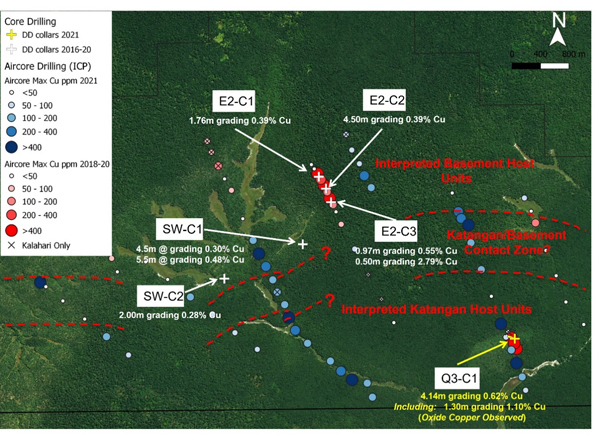
Figure 3: Map of D-PROSPECT, D7-C1, D7-C2 and D3-C2 with Core Results and Aircore Anomalies (See Company’s previously reported news releases dated October 16, 2019, April 14, 2021 and October 6, 2021).
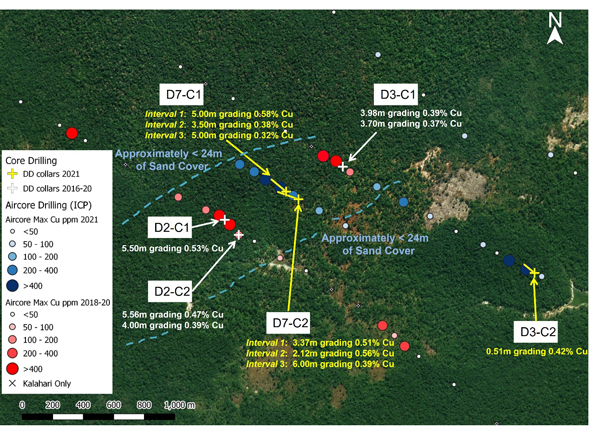
Table 1: Selected Core Drill Hole Results from 2021 Exploration Program: Q3-C1, D7-C1, D7-C2 and D3-C2
| Prospect, Target, Borehole ID & Interval | From (m) | To (m) | Core Interval (m) | Cu % |
| Q-TARGET | ||||
| Q3-C1 | 92.36 | 96.50 | 4.14 | 0.62* |
| Including: | 94.70 | 96.00 | 1.30 | 1.10 |
| D-PROSPECT | ||||
| D7-C1 | ||||
| Interval 1: | 43.00 | 48.00 | 5.00 | 0.58* |
| Interval 2: | 99.76 | 103.26 | 3.50 | 0.38 |
| Interval 3: | 111.50 | 112.00 | 0.50† | 0.50 |
| Interval 4: | 127.05 | 132.05 | 5.00 | 0.32 |
| Including: | 127.05 | 129.05 | 2.00 | 0.46 |
| And Including: | 131.05 | 132.05 | 1.00 | 0.53 |
| D7-C2 | ||||
| Interval 1: | 118.09 | 121.46 | 3.37 | 0.51 |
| Interval 2: | 158.00 | 160.12 | 2.12 | 0.56 |
| Interval 3: | 178.42 | 184.42 | 6.00 | 0.39 |
| Including: | 178.42 | 180.80 | 2.38 | 0.45 |
| And Including: | 182.90 | 184.42 | 1.52 | 0.59 |
| D3-C2 | 124.89 | 125.40 | 0.51 | 0.42 |
Note: Intertek Genalysis completed the analytical work with the core samples processed at their preparation facility in Kitwe, Zambia. All analytical procedures were conducted in an Intertek Genalysis laboratory in Perth, Australia. Reported widths are drilled core lengths as true widths are unknown at this time. Based upon current data it is estimated true widths range between 80 to 90% of the drilled intersections. A nominal cut-off grade of 0.30% Cu has been used to determine the boundaries of the intersections with no more than 2 metres of internal dilution of the intercept. † denotes single sample. *Copper Oxide mineralization observed.
QUALITY ASSURANCE AND QUALITY CONTROL
The results reported here for this core drilling program were analyzed by Intertek Genalysis, an independent and accredited laboratory. Samples were prepared at their facility in Kitwe, Zambia and analytical work conducted in Australia. The results were determined using multi-acid, near total digest, and analyzed by Inductively Coupled Plasma (“ICP”) Optical (Atomic) Emission Spectrometry (“OES”). The core sampling was conducted with a robust sampling protocol that included the appropriate insertion of standard reference material, duplicates, and blanks into the sample stream.
Field operations and management have been provided by Remote Exploration Services (“RES”) an independent geological consulting and contracting company. The core drilling was conducted by Blurock Mining Services, of Kitwe, Zambia.
Table 2: 2021 Core Hole ID, Azimuth, Dip, End of Hole Depth and Collar Coordinates and Comments
| Drill Hole ID | Azimuth Degree | Dip Degree | End of hole Depth (m) | Easting (m) | Northing (m) | Elevation (m) | Comments |
| Q3-C1 | 290 | 70 | 272.55 | 173085 | 8584343 | 1163 | Results in Table 1 |
| D7-C1 | 310 | 60 | 249.70 | 177684 | 8601474 | 1305 | Results in Table 1 |
| D7-C2 | 290 | 60 | 286.32 | 177765 | 8601424 | 1304 | Results in Table 1 |
| D3-C2 | 310 | 60 | 175.55 | 179315 | 8600940 | 1259 | Results in Table 1 |
| F4-C1 | 310 | 60 | 191.80 | 175000 | 8600979 | 1313 | Did not intersect significant mineralization |
| F4-C2 | 080 | 70 | 206.43 | 174789 | 8601057 | 1301 | Did not intersect significant mineralization |
THE PANGENI COPPER EXPLORATION PROJECT.
The Pangeni Project is located on the western extension of the Zambian Copperbelt, within the Lufilian Arc, underlain by Katangan Supergroup metasediments situated unconformably on basement schists and gneisses, which are covered by a thin veneer of Kalahari sands. The open pit Sentinel Copper Mine is operated by First Quantum Minerals Ltd. some 130 kilometres to the northeast of the Pangeni Project. A number of major international mining companies have identified this region of the Zambian Copperbelt to be prospective for the discovery of tier one copper mines and are also conducting extensive exploration work in this area.
The Pangeni Project property is geologically prospective for the following deposit types; Basement-hosted Cu (analogues: the Lumwana Deposit, Nyungu Prospect), Sediment-hosted stratiform Cu-Co (analogues: Nchanga, Konkola, Nkana, and Mufulira Deposits), other Domes Region Deposits e.g. Sentinel, and Kansanshi and DRC Copperbelt Deposits e.g. Lonshi, Frontier, Kamoa-Kakula).
ABOUT BEMETALS CORP.
BeMetals is a precious and base metals exploration and development company focused on becoming a leading metal producer through the acquisition of quality exploration, development and potentially production stage projects. The Company has recently established itself in the gold sector with the acquisition of certain wholly owned exploration projects in Japan. BeMetals is also progressing both its advanced high-grade, zinc-silver-gold-copper polymetallic underground exploration at the South Mountain Project in Idaho through a preliminary economic assessment, and its tier-one targeted, Pangeni Copper Exploration Project in Zambia. Guiding and leading BeMetals’ growth strategy is a strong board and management team, founders and significant shareholders of the Company, who have an extensive proven record of delivering considerable value in the mining sector through the discovery, construction and operation of mines around the world.
![]()


